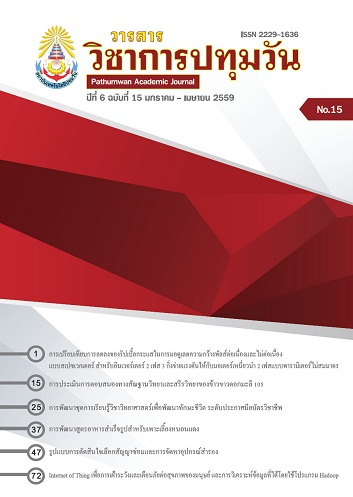Evaluation of Morphological and Physiological Response in Khao Dawk Mali 105 Rice (Oryza sativa L. cv. KDML 105) Induced by Zinc Oxide Nanoparticles
Main Article Content
Abstract
Nanoparticles have been widely used in industrial applications, as well as agriculture. Thisresearch investigated the effect of zinc oxide nanoparticles (ZnONPs) on the important crop plants inThailand, indica rice (Khao Dawk Mali 105; KDML 105). The seed germination, seedling growth(biomass) and physiological responses (photosynthetic pigment contents) were determined after exposureto different concentrations of ZnONPs (0-1000 mg L-1). The results observed the impact of ZnONPs atdifferent concentrations. The seed germination and growth reductions were observed in the highconcentrations of ZnONPs (500-1000 mg L-1). In addition, the accumulations of photosynthetic pigments(chlorophyll A, chlorophyll B and carotenoid contents) were decreased in the high concentrations ofZnONPs which could inhibit plant growth. ZnONPs at 100-300 mg L-1 enhanced the seed germinationand plant growth of rice seedlings. The rice seedlings exposed to 300 mg L-1 ZnONPs had significantlyincrease the plant growth and photosynthetic pigment contents. The ZnONPs-induced growth alterationswere correlated with photosynthetic pigment accumulations. The data suggested that ZnONPs (300 mgL-1) induced the plant growth of KDML 105, which could affect the productivity of plants in the future.
Article Details

This work is licensed under a Creative Commons Attribution-NonCommercial-NoDerivatives 4.0 International License.
The content and information in articles published in the Journal of Advanced Development in Engineering and Science are the opinions and responsibility of the article's author. The journal editors do not need to agree or share any responsibility.
Articles, information, content, etc. that are published in the Journal of Advanced Development in Engineering and Science are copyrighted by the Journal of Advanced Development in Engineering and Science. If any person or organization wishes to publish all or any part of it or to do anything. Only prior written permission from the Journal of Advanced Development in Engineering and Science is required.
